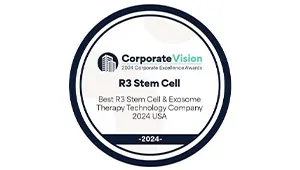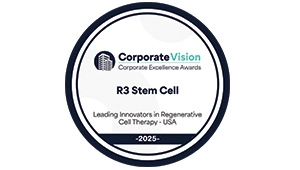Amniotic stem cells are a mixture of stem cells that can be extracted from the amniotic fluid and amniotic membrane after a pregnant woman has delivered her baby. The amniotic fluid surrounds the fetus during development in the uterus and it is contained by the amniotic membrane.
Since the amniotic fluid and amniotic membrane are collected after the baby is delivered, as they have usually been discarded in the past, there is no danger to the child when doing so. Therefore, the use of stem cells derived from amniotic tissues is considered to lack the ethical problems associated with the use of stem cells derived from embryos collected after induced abortions.
Stem cells that are derived from tissues such as the amniotic fluid and amniotic membrane, as well as those from the bone marrow, are used in medicine for the following reasons:
- To help stimulate proteins to reduce the inflammatory process in certain conditions that lead to pain, tissue damage, and disability.
- Differentiating and developing into tissues of the body such as skin, muscle, cartilage, bone, nerve, and heart and kidney tissue to repair areas damaged by diseases and injuries.
Advantages and disadvantages of amniotic stem cells
Amniotic stem cell pros and cons need to be looked at in order to decide whether using such tissue has benefits that outweigh any risks associated with its administration.
Advantages:
- The amniotic fluid contains an abundance of mesenchymal stem cells (MSCs) that stem from the fetus.
- These MSCs have a higher expansion potential than the ones derived from the bone marrow which means that more new tissue cells can be derived from the amniotic fluid.
- These stem cells have an enhanced stability and plasticity compared to adult stem cells allowing them to develop into healthier cells needed for tissue repair.
- Amniotic stem cells can be used to reconstruct birth defects such as diaphragmatic hernias in children, as well as repairing a premature amniotic membrane rupture during pregnancy.
- There’s no risk of the patient rejecting the stem cells.
- The amniotic stem cells contain hyaluronic acid that helps to lubricate the cartilage around joints.
Disadvantages:
- Amniotic fluid doesn’t contain a lot of embryonic stem cells.
- If there are pathologies that need to be treated while the mother is still pregnant with the fetus, then an amniocentesis needs to be performed. This is a technique where a needle is inserted into the uterus through the amniotic membrane and amniotic fluid is then collected. This does carry a small risk of causing a spontaneous miscarriage or premature labor.
Efficacy
In one literature review study regarding the most recent progress in stem cell therapies and indications in the specialty of orthopedics, the following observations were made:1
- Stem cell therapy has been successfully used for managing major orthopedic issues such as bone-joint injuries, ligament-tendon injuries, osteoarthritis-cartilage defects, and femoral head osteonecrosis.
- Stem cells have been used in bone tissue engineering and were combined with scaffolds to provide better and faster tissue healing.
- A recommendation was made that more and efficient studies would need to be conducted to evaluate the safety of stem cells.
With that being said, the general consensus looking at patient outcomes is that stem cell therapy is a very safe and effective form of treatment.












Sorry, the comment form is closed at this time.